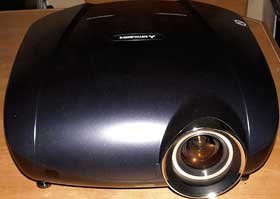- Mitsubishi HC6800 Projector Review
- Mitsubishi HC6800 Projector Overview
- Mitsubishi HC6800 Projector - Special Features
- Mitsubishi HC6800 - Physical Tour
- Mitsubishi HC6800 - Physical Tour-2
- Mitsubishi HC6800 - Physical Tour-3
- Mitsubishi HC6800 Projector - Image Quality
- Mitsubishi HC6800 Projector - Image Quality-2
- Mitsubishi HC6800 Projector - Image Quality-3
- Mitsubishi HC6800 Projector - Image Quality-4
- Mitsubishi HC6800 Projector - Image Quality-5
- Mitsubishi HC6800 - Performance
- Mitsubishi HC6800 - Performance-2
- Mitsubishi HC6800 - Performance-3
- Mitsubishi HC6800 Projector Calibration and Settings
- Mitsubishi HC6800 Projector Calibration and Settings-2
- Mitsubishi HC6800 - Projector Screens
- Mitsubishi HC6800 - Competitors
- Mitsubishi HC6800 Projector - Warranty
- Mitsubishi HC6800 - Review Summary
- Mitsubishi HC6800 - Review Summary-2
- Mitsubishi HC6800 Projector: Pros, Cons, and Typical Capabilities
- Mitsubishi HC6800 Projector Specifications
- Home
- All Reviews
- By Category
- By Manufacturer
- Best Projectors
- Best Projectors By Category
- Best Projectors On Amazon
- Best 4K Projectors
- Best Ultra Short Throw Projectors
- Best Laser TVs
- Best Gaming Projectors
- Best Home Theater Projectors
- Best Projectors Under $1,000
- Best Projectors Under $500
- Best Portable Projectors
- Best Outdoor Projectors
- Best Bright Budget-Friendly Outdoor Projectors
- Best Battery Powered Outdoor Projectors
- Best Outdoor Projection Screens
- Industry News
- Reports
- Projector Manufacturers
- Manufacturer Terminology
- Manufacturers
- Recent Articles
- Custom Integration
- Projection Terms
- Projector Manufacturers Categories
- Videos
- Blog
Close
Menu
- All Reviews
- By Category
- By Manufacturer
- Best Projectors By Category
- Best Projectors On Amazon
- Best 4K Projectors
- Best Ultra Short Throw Projectors
- Best Laser TVs
- Best Gaming Projectors
- Best Home Theater Projectors
- Best Projectors Under $1,000
- Best Projectors Under $500
- Best Portable Projectors
- Best Outdoor Projectors
- Best Bright Budget-Friendly Outdoor Projectors
- Best Battery Powered Outdoor Projectors
- Best Outdoor Projection Screens
- Latest News
- Reports & Guides
- Manufacturers
- Articles
- Custom Integration
- Projection Terms
- Blog
close




